
漢德百科全書 | 汉德百科全书
 Provence-Alpes-Côte d´Azur
Provence-Alpes-Côte d´Azur
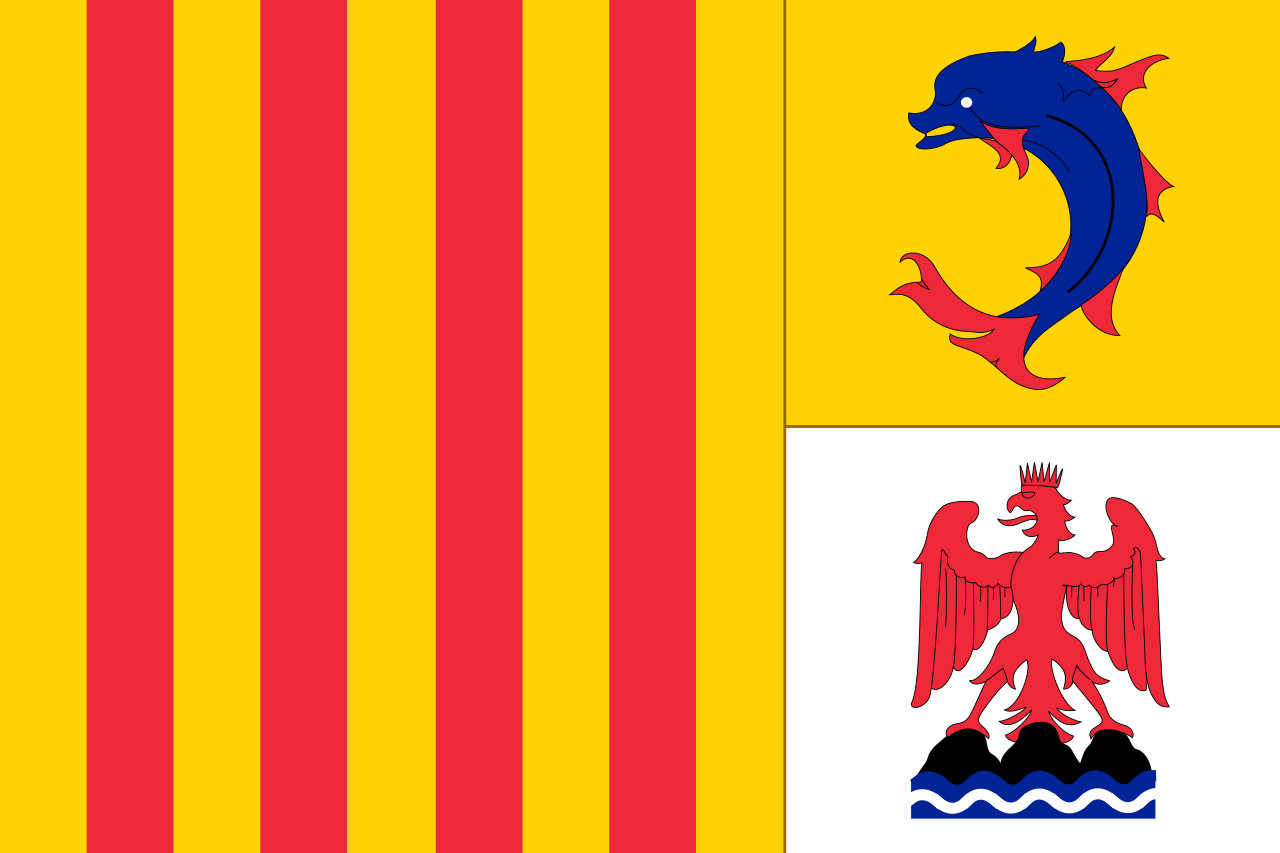

Das Festival von Avignon (Festival d'Avignon) ist ein Theater-, Tanz- und Gesangsfestival in der südfranzösischen Stadt Avignon. Es wurde 1947 von Jean Vilar gegründet und findet jährlich in den drei letzten Juli-Wochen statt. Ab 1971 wurde es von dem damals 35-jährigen Paul Puaux mit einem Generationenwechsel der Intendanten bis 1979 fortgeführt. Seitdem hat es die Rechtsform eines Vereins in der Trägerschaft der Stadt, vertreten durch den Bürgermeister.
阿维尼翁节(Festival d'Avignon),又称阿维尼翁艺术节,是每年7月于法国城市阿维尼翁城内的教宗宫一带举办的大型戏剧艺术节,由Jean Vilar于1947年创办,是法国现存最古老的艺术节,亦是世界著名的大型艺术节。

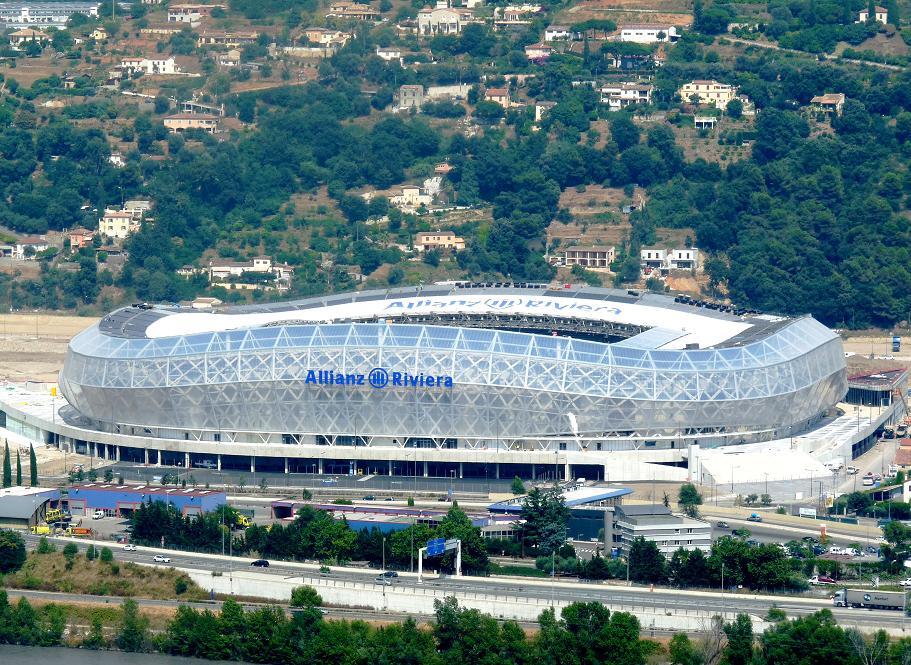


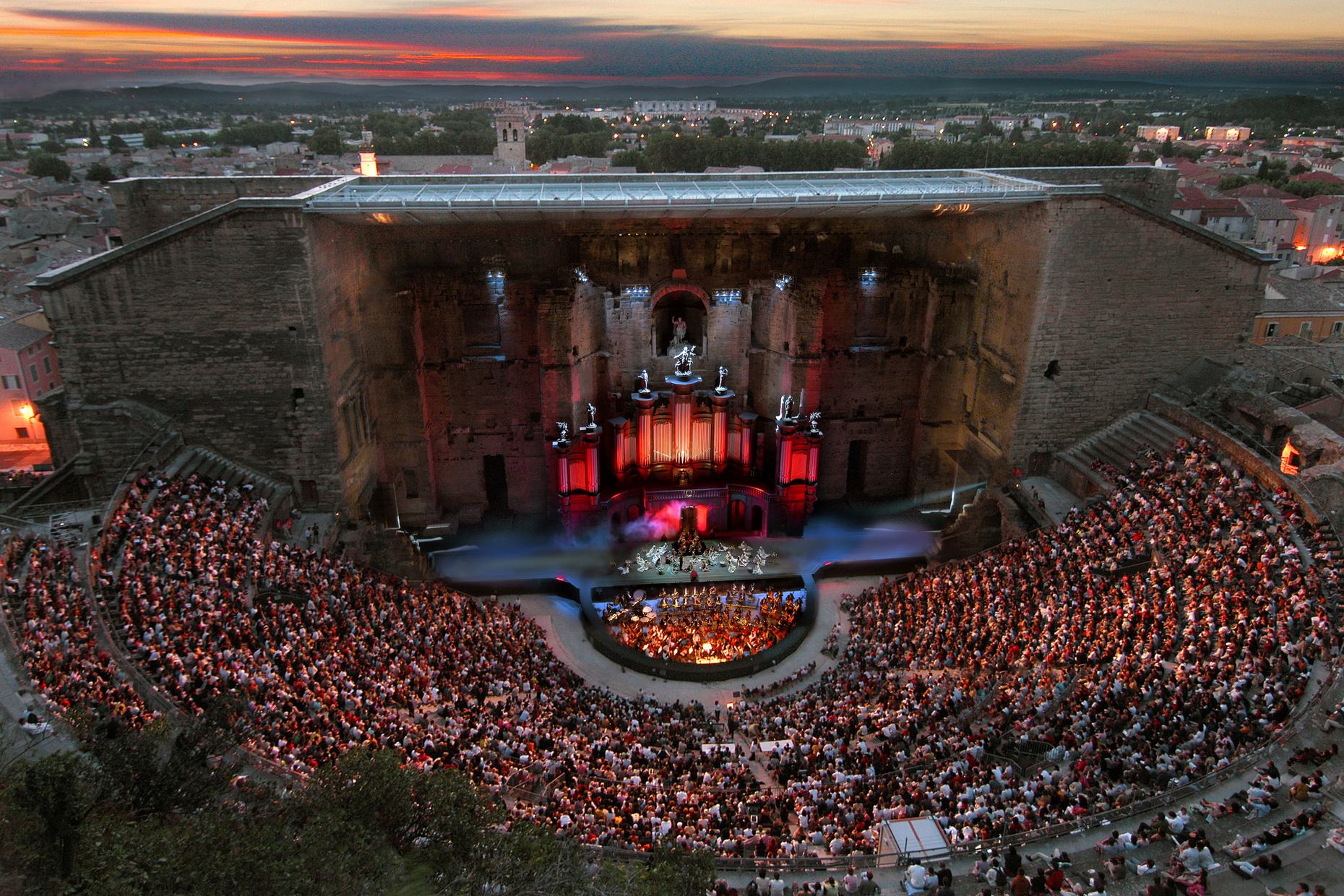
Das Theater von Orange, ein antikes römisches Theater in Südostfrankreich, wurde im 1. Jahrhundert n. Chr. erbaut. Es befindet sich im Besitz der Kommune Orange und beherbergt im Sommer das Opernfestival Chorégies d'Orange.
Es gilt als eines der besterhaltenen römischen Theater in der 40 v. Chr. gegründeten, römischen Kolonie Arausio. Im Leben der Einwohner, die dort häufig ihre Freizeit verbrachten, spielte das Theater eine große Rolle. Die römischen Machthaber sahen in ihm nicht nur ein Werkzeug, das half, die römische Kultur in den Kolonien zu verbreiten, sondern auch ein Mittel, um die Bevölkerung von politischen Aktivitäten abzulenken. Pantomime und Dichterlesungen, meist den ganzen Tag andauernd, waren die vorherrschenden Formen der Unterhaltung. Für die Zuschauer, die sich von aufwändigen Effekten begeistern ließen, wurden prunkvolle Bühnenbilder gebaut. Die Spiele waren offen für alle und kostenlos.
Als das römische Reich im 4. Jahrhundert auseinanderbröckelte und sich das Christentum ausbreitete, wurde das Theater 391 n. Chr. durch offiziellen Erlass von der Kirche geschlossen. Es wurde komplett verlassen und von den Barbaren geplündert. Während des Mittelalters war es ein Verteidigungsposten. Im 16. Jahrhundert, zur Zeit der Religionskriege wurde es von den Stadtbewohnern als Zufluchtsort genutzt. Ludwig XIV. bezeichnete die Bühnenfassade bei einem Besuch als die schönste Mauer seines Königreichs („C'est la plus belle muraille de mon royaume“). Während der Französischen Revolution diente es als Gefängnis, wo Gegner der Revolution unter unwürdigen Verhältnissen gefangen waren. 1824 begannen umfangreiche Renovierungsarbeiten unter der Leitung des Architekten Auguste Caristie. Seit 1869 finden im "antiken" Theater wieder regelmäßig Aufführungen und Konzerte statt, darunter zum Beispiel das Opernfestival Chorégies d'Orange.
Es wird angenommen, dass das Theater während der römischen Zeit ca. 10.000 Plätze hatte. Heute finden 7.000 Personen Platz. Nur die ersten drei der ursprünglichen Sitzreihen sind erhalten geblieben.
Im Jahr 1981 wurde es zusammen mit dem Bogen von Orange von der UNESCO zum Weltkulturerbe erklärt.
奥朗日古罗马剧场(法语:Théâtre antique d'Orange)是位于法国南部沃吕克兹省奥朗日的一座古罗马剧场遗址。奥朗日古罗马剧场保存状态完好,被联合国教科文组织指定为世界文化遗产。剧场建造于1世纪时奥古斯都统治时期。剧场估计可收纳8000人至10000人。4世纪时剧场被放弃,化为废墟。在中世纪时则是防卫据点。1825年,在普罗斯佩·梅里美的提案下,剧场得到修复。自1869年起,每年夏季都在这里举办奥朗日艺术节。奥朗日凯旋门亦位于剧场附近。
オランジュのローマ劇場とその周辺及び「凱旋門」(オランジェのローマげきじょうとそのしゅうへんおよびがいせんもん)は、南フランスヴォクリューズ県の町オランジュにある、ユネスコの世界遺産。特に劇場は他の都市の同種の遺跡に比べて保存状態がよいことで知られている。
The Roman Theatre of Orange (French: Théâtre antique d'Orange) is a Roman theatre in Orange, Vaucluse, France. It was built early in the 1st century AD. The structure is owned by the municipality of Orange and is the home of the summer opera festival, the Chorégies d'Orange.
It is one of the best preserved of all Roman theatres, and served the Roman colony of Arausio (or, more specifically, Colonia Julia Firma Secundanorum Arausio: "the Julian colony of Arausio established by the soldiers of the second legion") which was founded in 40 BC. Playing a major role in the life of the citizens, who spent a large part of their free time there, the theatre was seen by the Roman authorities not only as a means of spreading Roman culture to the colonies, but also as a way of distracting them from all political activities.
Mime, pantomime, poetry readings and the "attelana" (a kind of farce rather like the commedia dell'arte) were the dominant forms of entertainment, much of which lasted all day. For the common people, who were fond of spectacular effects, magnificent stage sets became very important, as was the use of stage machinery. The entertainment offered was open to all and free of charge.
As the Western Roman Empire declined during the 4th century, by which time Christianity had become the official religion, the theatre was closed by official edict in AD 391, since the Church opposed what it regarded at the time as uncivilized spectacles. It was probably pillaged by the Visigoths in 412, and like most Roman buildings was certainly stripped of its better stone over the centuries for reuse. It was used as a defensive post in the early Middle Ages, and by the 12th century began to be used by the Church for religious plays. During the 16th-century religious wars, it became a refuge for the townspeople. It has since been restored to its former function, primarily for opera, along side its use as a tourist spot.
Le théâtre antique d'Orange, construit sous le règne d'Auguste au Ier siècle av. J.-C. par les vétérans de la IIe légion de Jules César, est un des théâtres romains les mieux conservés au monde. Il dispose encore d'un impressionnant mur extérieur avec l'élévation d'origine (104 m de large pour 35 m de haut).
Il teatro romano di Arausio è un antico teatro situato ad Orange (Provenza-Alpi-Costa Azzurra), nella Francia del sud. La struttura è attualmente gestita dal comune e viene utilizzata d'estate per la manifestazione Chorégies d'Orange. Dal 1862 è classificato come Monumento storico di Francia.[1]
El Teatro romano de Orange, construido bajo el reinado de César Augusto en el siglo I, es uno de los teatros romanos mejor conservados del mundo. Aún dispone del muro de fachada escénica con su elevación original: 103 metros de largo por 37 de alto.
El teatro de Orange, junto con el Arco del Triunfo de la misma localidad, fue declarado Patrimonio de la Humanidad por la Unesco en 1981.
Античный театр в Араузионе (ныне — город Оранж) — один из наиболее хорошо сохранившихся древнеримских театров. Является местом проведения ежегодного летнего музыкального фестиваля «Хорегии Оранжа». France
France

 History
History
 J 0 - 500 AD
J 0 - 500 AD

 Music
Music
 Music Hall, State Theater, Opera House
Music Hall, State Theater, Opera House

 Provence-Alpes-Côte d´Azur
Provence-Alpes-Côte d´Azur

 World Heritage
World Heritage
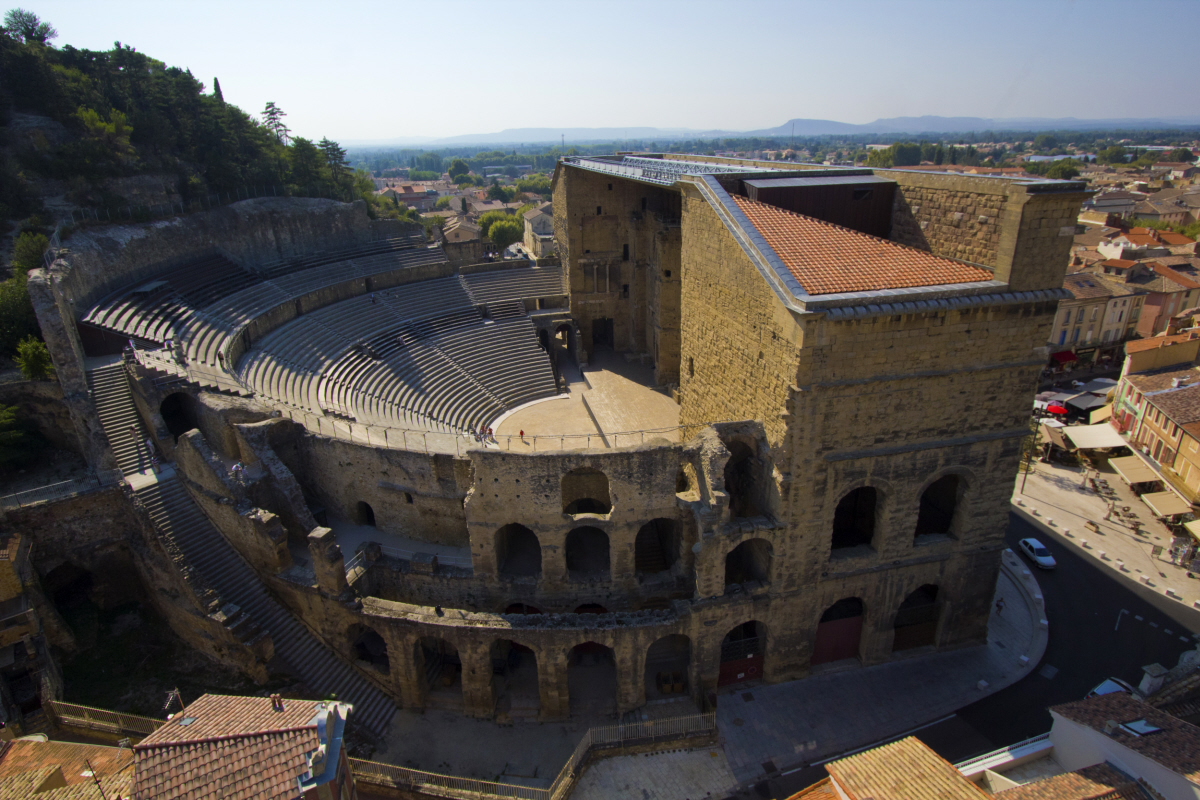
Das Theater von Orange, ein antikes römisches Theater in Südostfrankreich, wurde im 1. Jahrhundert n. Chr. erbaut. Es befindet sich im Besitz der Kommune Orange und beherbergt im Sommer das Opernfestival Chorégies d'Orange.
Es gilt als eines der besterhaltenen römischen Theater in der 40 v. Chr. gegründeten, römischen Kolonie Arausio. Im Leben der Einwohner, die dort häufig ihre Freizeit verbrachten, spielte das Theater eine große Rolle. Die römischen Machthaber sahen in ihm nicht nur ein Werkzeug, das half, die römische Kultur in den Kolonien zu verbreiten, sondern auch ein Mittel, um die Bevölkerung von politischen Aktivitäten abzulenken. Pantomime und Dichterlesungen, meist den ganzen Tag andauernd, waren die vorherrschenden Formen der Unterhaltung. Für die Zuschauer, die sich von aufwändigen Effekten begeistern ließen, wurden prunkvolle Bühnenbilder gebaut. Die Spiele waren offen für alle und kostenlos.
Als das römische Reich im 4. Jahrhundert auseinanderbröckelte und sich das Christentum ausbreitete, wurde das Theater 391 n. Chr. durch offiziellen Erlass von der Kirche geschlossen. Es wurde komplett verlassen und von den Barbaren geplündert. Während des Mittelalters war es ein Verteidigungsposten. Im 16. Jahrhundert, zur Zeit der Religionskriege wurde es von den Stadtbewohnern als Zufluchtsort genutzt. Ludwig XIV. bezeichnete die Bühnenfassade bei einem Besuch als die schönste Mauer seines Königreichs („C'est la plus belle muraille de mon royaume“). Während der Französischen Revolution diente es als Gefängnis, wo Gegner der Revolution unter unwürdigen Verhältnissen gefangen waren. 1824 begannen umfangreiche Renovierungsarbeiten unter der Leitung des Architekten Auguste Caristie. Seit 1869 finden im "antiken" Theater wieder regelmäßig Aufführungen und Konzerte statt, darunter zum Beispiel das Opernfestival Chorégies d'Orange.
Es wird angenommen, dass das Theater während der römischen Zeit ca. 10.000 Plätze hatte. Heute finden 7.000 Personen Platz. Nur die ersten drei der ursprünglichen Sitzreihen sind erhalten geblieben.
Im Jahr 1981 wurde es zusammen mit dem Bogen von Orange von der UNESCO zum Weltkulturerbe erklärt.
奥朗日古罗马剧场(法语:Théâtre antique d'Orange)是位于法国南部沃吕克兹省奥朗日的一座古罗马剧场遗址。奥朗日古罗马剧场保存状态完好,被联合国教科文组织指定为世界文化遗产。剧场建造于1世纪时奥古斯都统治时期。剧场估计可收纳8000人至10000人。4世纪时剧场被放弃,化为废墟。在中世纪时则是防卫据点。1825年,在普罗斯佩·梅里美的提案下,剧场得到修复。自1869年起,每年夏季都在这里举办奥朗日艺术节。奥朗日凯旋门亦位于剧场附近。
オランジュのローマ劇場とその周辺及び「凱旋門」(オランジェのローマげきじょうとそのしゅうへんおよびがいせんもん)は、南フランスヴォクリューズ県の町オランジュにある、ユネスコの世界遺産。特に劇場は他の都市の同種の遺跡に比べて保存状態がよいことで知られている。
The Roman Theatre of Orange (French: Théâtre antique d'Orange) is a Roman theatre in Orange, Vaucluse, France. It was built early in the 1st century AD. The structure is owned by the municipality of Orange and is the home of the summer opera festival, the Chorégies d'Orange.
It is one of the best preserved of all Roman theatres, and served the Roman colony of Arausio (or, more specifically, Colonia Julia Firma Secundanorum Arausio: "the Julian colony of Arausio established by the soldiers of the second legion") which was founded in 40 BC. Playing a major role in the life of the citizens, who spent a large part of their free time there, the theatre was seen by the Roman authorities not only as a means of spreading Roman culture to the colonies, but also as a way of distracting them from all political activities.
Mime, pantomime, poetry readings and the "attelana" (a kind of farce rather like the commedia dell'arte) were the dominant forms of entertainment, much of which lasted all day. For the common people, who were fond of spectacular effects, magnificent stage sets became very important, as was the use of stage machinery. The entertainment offered was open to all and free of charge.
As the Western Roman Empire declined during the 4th century, by which time Christianity had become the official religion, the theatre was closed by official edict in AD 391, since the Church opposed what it regarded at the time as uncivilized spectacles. It was probably pillaged by the Visigoths in 412, and like most Roman buildings was certainly stripped of its better stone over the centuries for reuse. It was used as a defensive post in the early Middle Ages, and by the 12th century began to be used by the Church for religious plays. During the 16th-century religious wars, it became a refuge for the townspeople. It has since been restored to its former function, primarily for opera, along side its use as a tourist spot.
Le théâtre antique d'Orange, construit sous le règne d'Auguste au Ier siècle av. J.-C. par les vétérans de la IIe légion de Jules César, est un des théâtres romains les mieux conservés au monde. Il dispose encore d'un impressionnant mur extérieur avec l'élévation d'origine (104 m de large pour 35 m de haut).
Il teatro romano di Arausio è un antico teatro situato ad Orange (Provenza-Alpi-Costa Azzurra), nella Francia del sud. La struttura è attualmente gestita dal comune e viene utilizzata d'estate per la manifestazione Chorégies d'Orange. Dal 1862 è classificato come Monumento storico di Francia.[1]
El Teatro romano de Orange, construido bajo el reinado de César Augusto en el siglo I, es uno de los teatros romanos mejor conservados del mundo. Aún dispone del muro de fachada escénica con su elevación original: 103 metros de largo por 37 de alto.
El teatro de Orange, junto con el Arco del Triunfo de la misma localidad, fue declarado Patrimonio de la Humanidad por la Unesco en 1981.
Античный театр в Араузионе (ныне — город Оранж) — один из наиболее хорошо сохранившихся древнеримских театров. Является местом проведения ежегодного летнего музыкального фестиваля «Хорегии Оранжа».






1 – The Basse Corniche, the closest to the sea
The Basse Corniche criss-crosses the indented coast and allows the discovery of very beautiful and elegant seaside resorts. It leaves from the port of Nice to reach Menton, situated before Italy. Our trip along the Basse Corniche will take us to Cap d’Ail, the last town crossed on the metropolitan territory.
Our discovery of the Basse Corniche begins at the Lympia port in Nice, a picturesque district with colourful facades which seduces us with its charm and beauty!
As we leave, the road quickly borders the big blue sea where your eyes are also drawn to the famous Belle Epoque houses that border the route.
A stop on Boulevard Carnot is a must to admire the sublime view of the Baie des Anges.
It is hard to imagine that only 150 years ago, this coastline was still wild and inhabited by a few fishing and farming families! As we go along we cannot help but notice the lush vegetation and the surrounding villas! It was in the 1860s and with the arrival of the train that these exceptional residences were built. The aristocrats (mostly English) built villas that were as luxurious as they were amazing (especially for the local population!) and the coastline began to change little by little.
Cities to visit on the Basse Corniche
A few kilometres from Nice, you can see the Saint-Jean-Cap-Ferrat peninsula and the famous harbour of Villefranche-sur-Mer. With Beaulieu-sur-Mer as their neighbour, these towns formed one and the same commune before their independence about a century earlier.
The historic Villefranche-sur-Mer will not fail to seduce you with its citadel, its colourful old town and its world-famous harbour.
The very chic Beaulieu-sur-Mer transports you to another time with its many Belle Époque buildings, including the Villa Kerylos, which you can visit!
The famous peninsula of Saint-Jean-Cap-Ferrat, often known as the peninsula of the billionaires, is especially famous for its gentle way of life and its wild nature. To be discovered on foot along its coastal paths!
On leaving Beaulieu-sur-Mer, you can only admire the cliffs that fall directly into the sea. The district of “La Petite Afrique” offers a most striking spectacle where the name Alpes Maritimes takes all its meaning!
The road continues to meander, at the foot of these vertiginous cliffs where it was necessary to dig tunnels in places to be able to circulate. Impressive!
After having passed Eze bord de Mer (we advise you to climb up to the village from Nietzsche’s path), the commune of Cap d’Ail is in sight! A true testimony to the Belle Époque past of this region, it is the last rampart before the Principality of Monaco. To discover absolutely: its coastal path and its magnificent Mala beach nestled in the heart of a cove.
2 – The Moyenne Corniche, panoramic views of the coastal villages
The Moyenne Corniche rises a few hundred metres above sea level and offers exceptional views and meanders along the steep cliffs. It starts in the harbour district, at the level of the Max Barel square and the avenue de la Corniche André De Joly (prefect of the Alpes-Maritimes who decided the construction of this corniche in 1908). It is also the former National 7, the “Holiday Route” which linked Paris to Menton! It is easy to imagine the happiness of the holidaymakers who finished their journey facing the deep blue sea!
What is remarkable when you drive along the Moyenne Corniche is to discover the viewpoints that are open to you! The road winds between steep cliffs and perpetually green vegetation. Down below you can see the coastal towns; the Corniches often cross these towns, from the coast to the top of the cliffs, as in Villefranche-sur-Mer, Eze or Cap d’Ail.
The avenue Bella Vista, as its name suggests, is strategic for admiring the view! Moreover, a compulsory stop is required a little further on in Eze village.
This medieval town, perched on a rocky peak, is a must on the French Riviera. The best point of view? It is from the Jardin Exotique d’Eze which can be reached after strolling through the village’s narrow streets.
To complete your discovery, take the time to visit one of the two perfume factory-laboratories in the village: Galimard and Fragonard. They open their doors to you for an extraordinary olfactory discovery. You can even create your own perfume!
The Moyenne Corniche is also a privileged route to reach the natural sites that surround it, such as the Mont Boron forest park or the Parc du Vinaigrier (in Nice), which are real green lungs in this urban setting. It is also the starting point for numerous hiking trails.
Our advice:
Don’t hesitate to take the paths and tracks that link the coast to the Corniche. The sometimes steep ascent is rewarded by the breathtaking views you will discover! Don’t forget your camera!
3 – The Grande Corniche, the most spectacular
The Grande Corniche is situated at an altitude of over 400 metres. It is the oldest road, built under the orders of Napoleon 1st. It follows the route of the Roman road “Via Augusta” (which ran along the Ligurian coast and the French Riviera) and some passages are original. It starts in the Riquier district of Nice, more precisely at the Boulevard Bischoffsheim. Difficult to pronounce! Perched on a cliffside, it is undoubtedly the most famous, the most mythical, the most sporty, the wildest…the most spectacular!
The Grande Corniche is highly prized for its natural scenery. It crosses the Grande Corniche departmental park which extends from Mont Vinaigrier (in Nice) to Mont Bastide, passing through Mont Leuze, the Plateau de la Justice, the Revère fort and the Forna peak. Blue as far as the eye can see on one side and the Mercantour mountains on the other! The show is breathtaking!
Often filmed during sports events, it is also a playground for motor rallies, car launches or television reports.
The final of the famous “Paris-Nice” cycle race takes place here every year. The riders cross the mythical Col d’Eze, which culminates at an altitude of 500 metres. In August 2020, a stage of the Tour de France also took place there.
It is not rare to come across cyclists who try to break away to experience this beautiful stage! Fans of the “Petite Reine”… on your marks, ready? Start pedalling!

 International cities
International cities
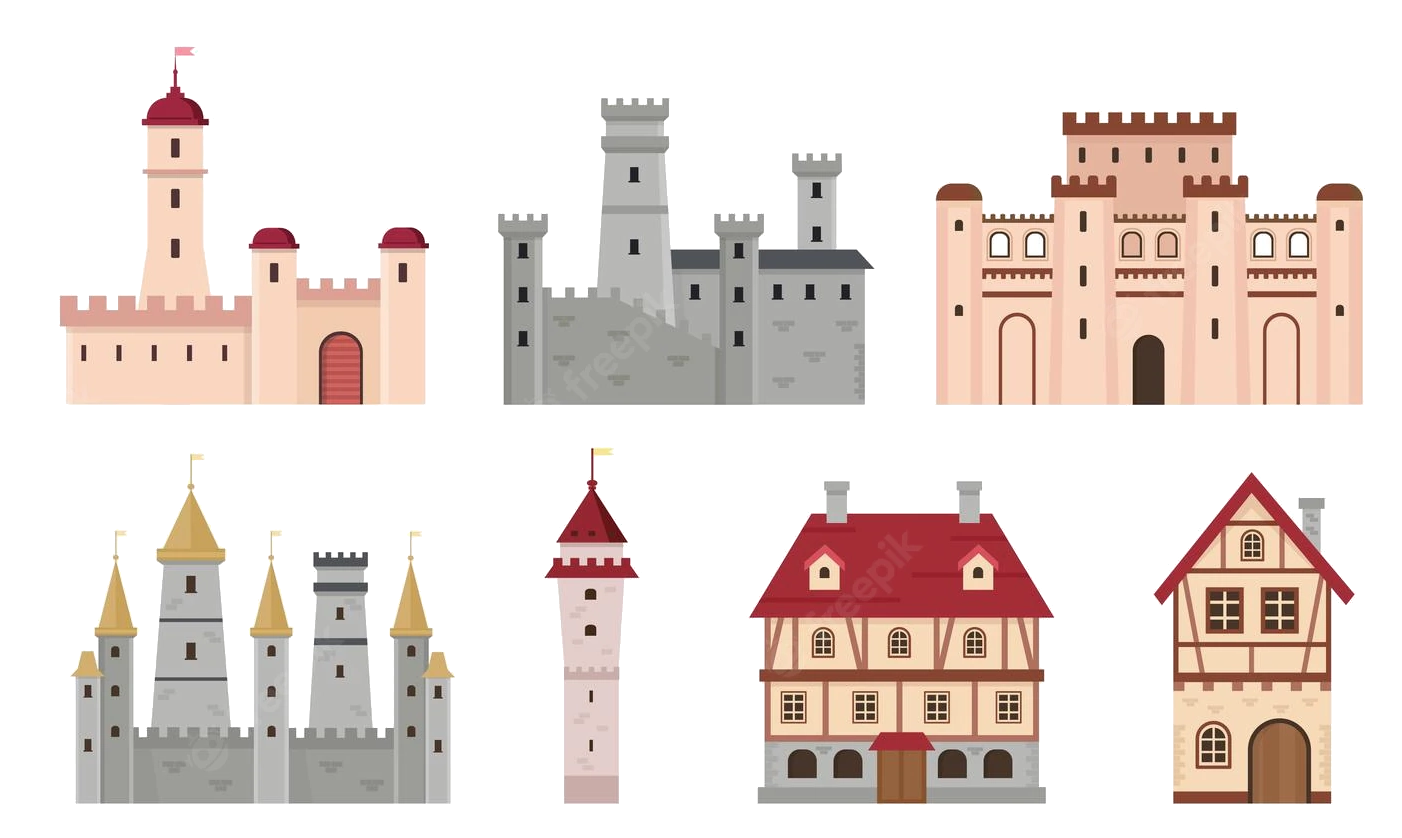 Medieval cities in Europe
Medieval cities in Europe
 Architecture
Architecture
 Sport
Sport
 Performing Arts
Performing Arts
 Ile-de-France
Ile-de-France
 Motorsport
Motorsport
 Eat and Drink
Eat and Drink